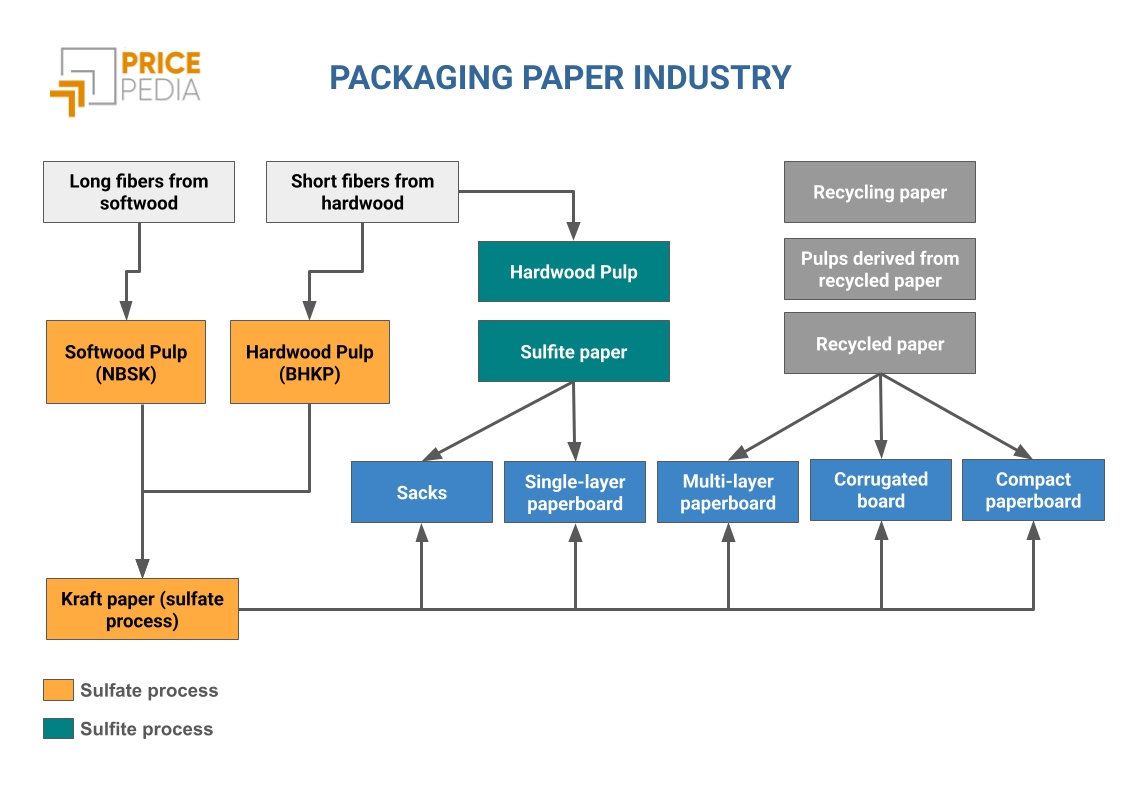The price of sack kraft paper explained through its determinants
Paper pulp is the main cost driver, but not the only one
Published by Pasquale Marzano. .
Packaging Paper Price DriversThe price of paper pulp serves as a reference point for all products in the packaging paper supply chain. As described in the article Price differentiation along the packaging paper supply chain, it tends to guide price trends throughout the supply chain, more or less strongly depending on the degree of differentiation of the finished product and the transformations required to produce it.
In the case of sack kraft paper as well, paper pulp can act as a cost benchmark capable of explaining its price dynamics.
The following chart shows the price trend of unbleached kraft paper used in sack production and the price of its main cost input, represented by the price of bleached coniferous chemical wood pulp, expressed in euros per ton.
Unbleached sack kraft paper and paper pulp: price comparison
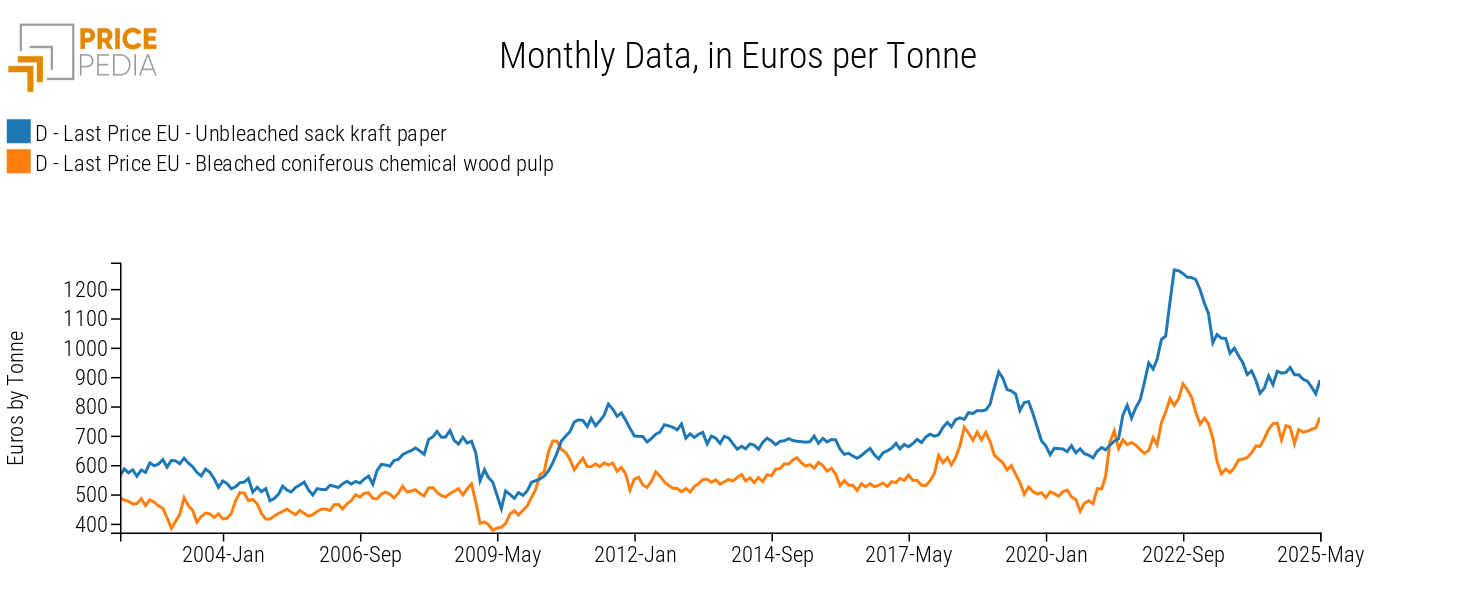
As can be seen from the chart, the price of paper pulp tends to anticipate the trend of sack kraft paper. The two price series also exhibit a fairly high linear correlation, equal to 0.84.
In the upward phase of the 2021-2022 price cycle, both products saw fairly similar increases of the same order of magnitude, above +50%. In the subsequent price drop phase in 2023-2024, the price of kraft paper experienced a particularly sharp decline, only partially due to the decrease in the price of paper pulp.
Do you want to stay up-to-date on commodity market trends?
Sign up for PricePedia newsletter: it's free!
A forecasting model for the price of sack kraft paper
In order to assess the role played by other factors in the recent price dynamics of sack kraft paper and to build a robust forecasting model, it may be useful to consider, in addition to the price of paper pulp, the prices of other raw materials used in the kraft paper production process that provide certain physical properties, such as moisture and tensile resistance. The specific combination of “secondary” raw materials can vary depending on the desired properties.
Below is a model that takes into account the most representative inputs. In particular, in addition to the price of paper pulp, it considers:
- the price of corn starch, used to improve the paper's tensile strength,
- the price of urea resins, used to reinforce the paper and make it more moisture-resistant.
The model also includes an indicator of supply-demand tensions in the sack kraft paper sector, represented by the industrial cycle index of the Euro Area, and an indicator of other costs not related to raw materials (labor, services, etc.), represented by the consumer price index of the Euro Area.
The following graph shows the long-term regression fit of the model estimated for the price of unbleached sack kraft paper[1].
Comparison between unbleached sack kraft paper and long-term fit
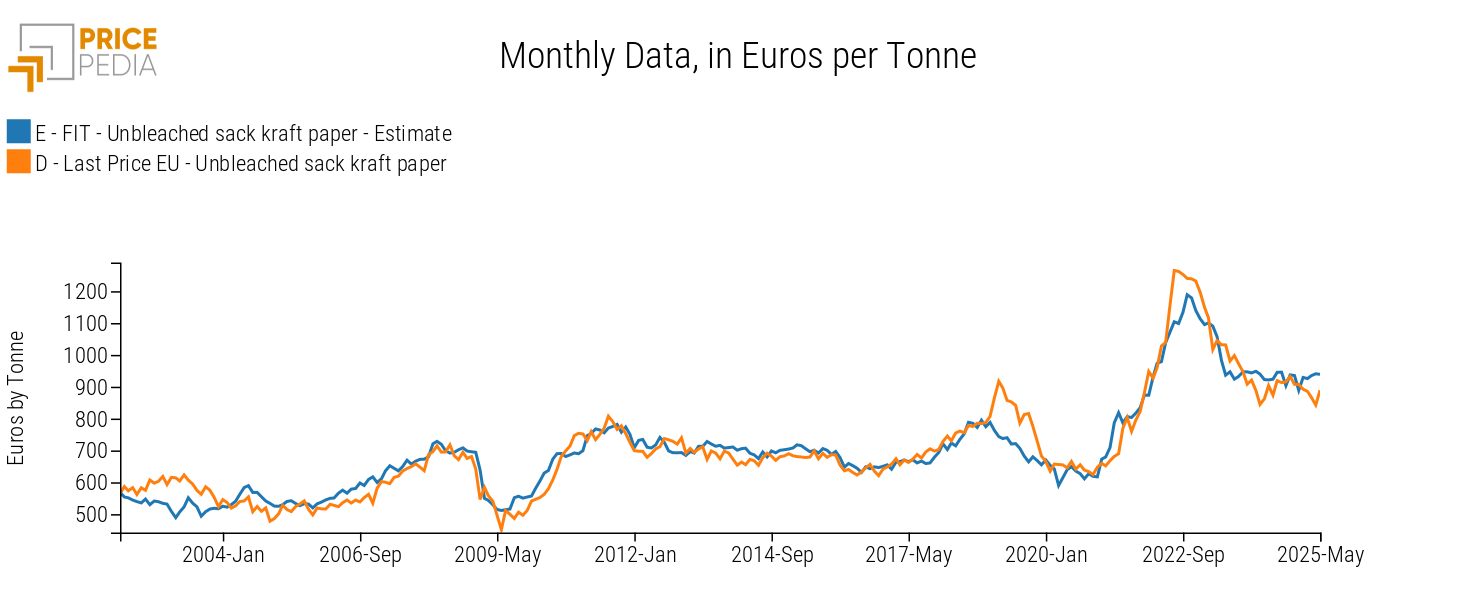
As shown in the chart, the long-term fit can accurately account for both the actual levels and dynamics of the price of unbleached sack kraft paper.
Conclusions
Paper pulp is a key price reference when evaluating price trends of downstream products in the packaging paper supply chain. However, in the case of sack kraft paper, to formulate a robust forecast, it is necessary to also include “secondary” cost inputs, such as starches and resins, in the model.
1. The estimated model is the Engle and Granger model. For a description of the model, see footnotes 3-7 of the article Prezzo degli acciai lunghi: effetto costi e mercati finanziari.
The estimation results are shown below:
| Long-term regression results |
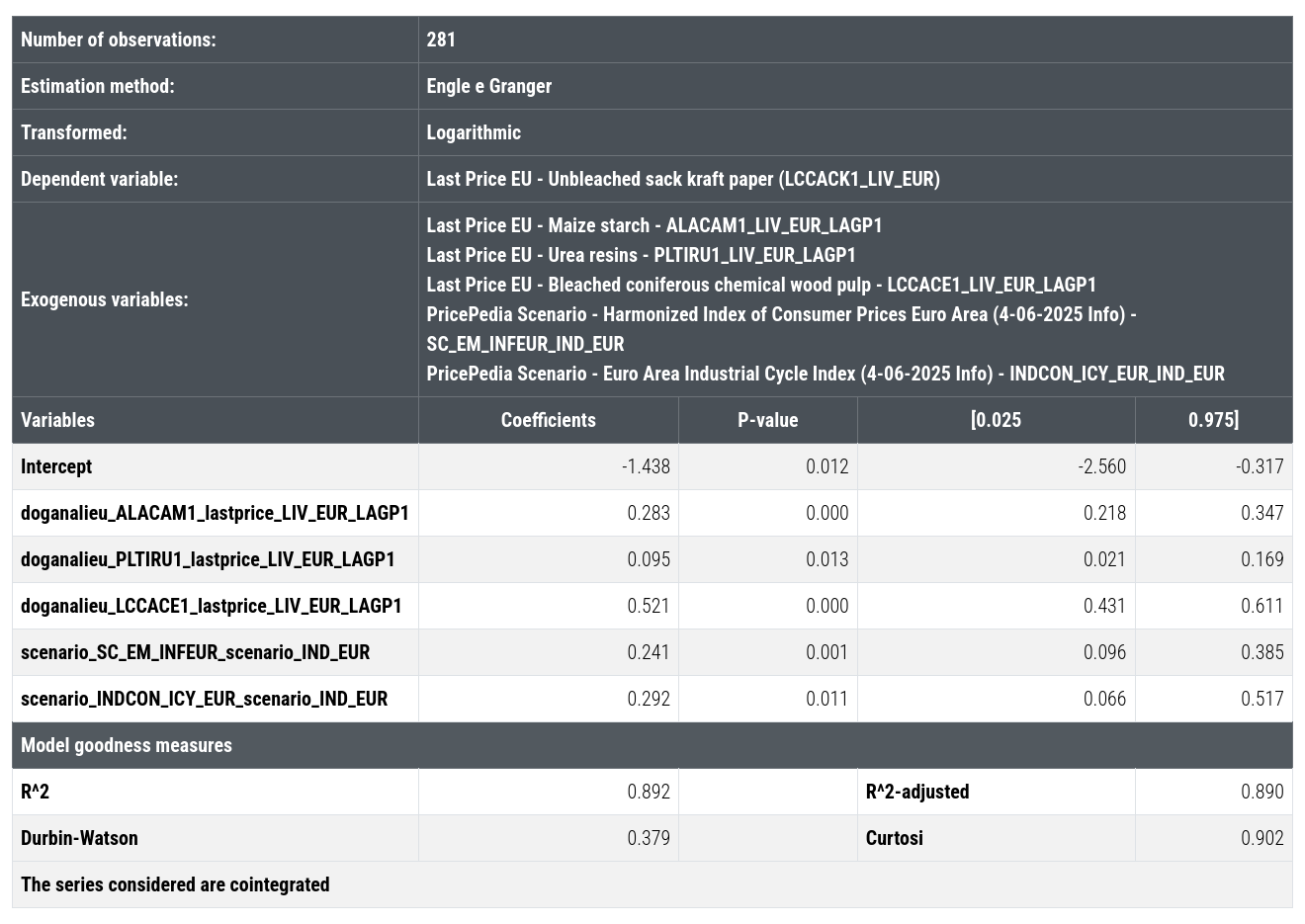 |
| Short-term regression results |
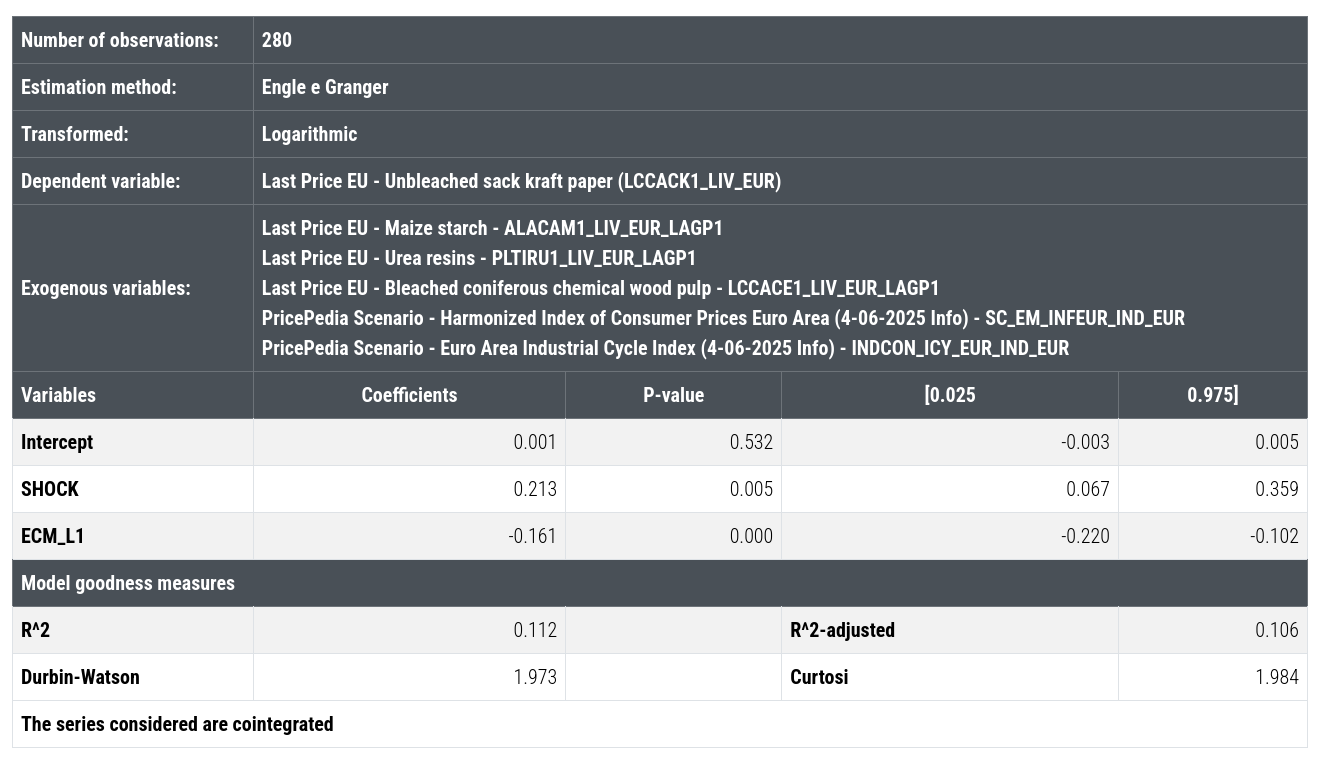 |
